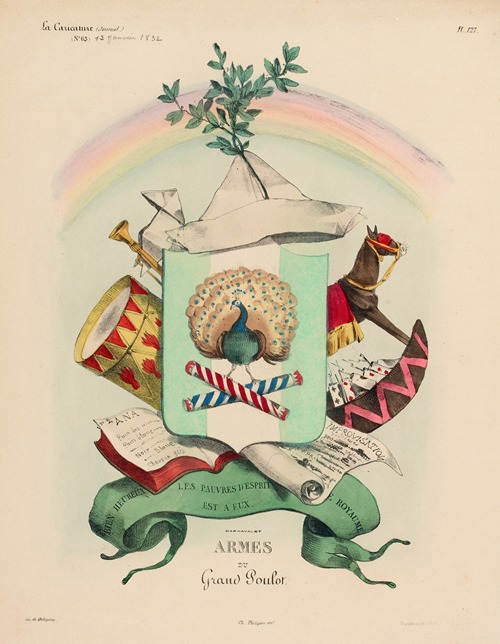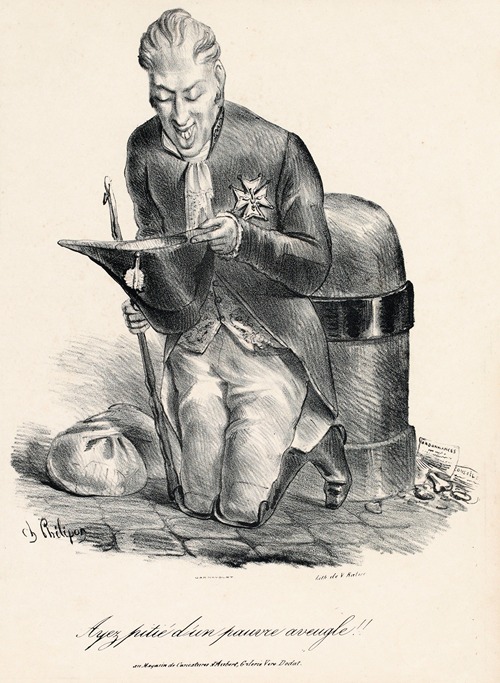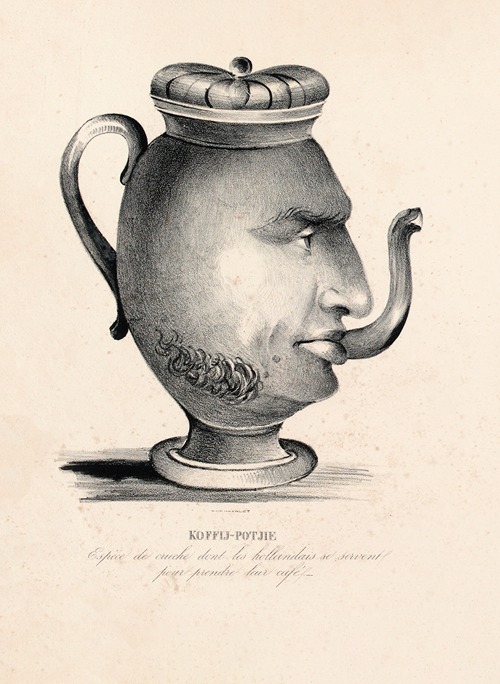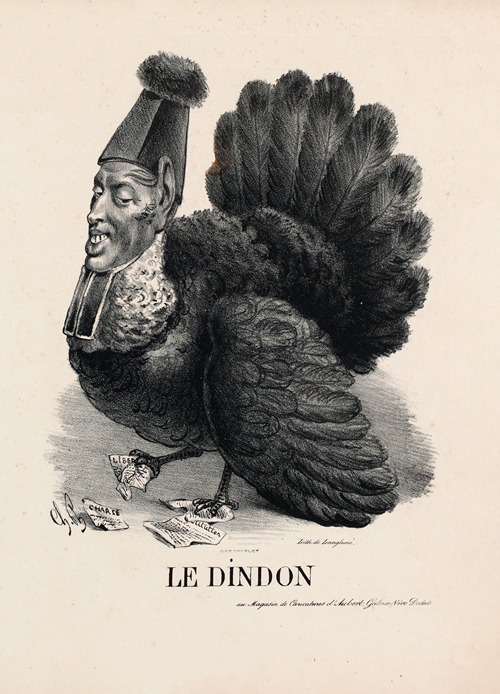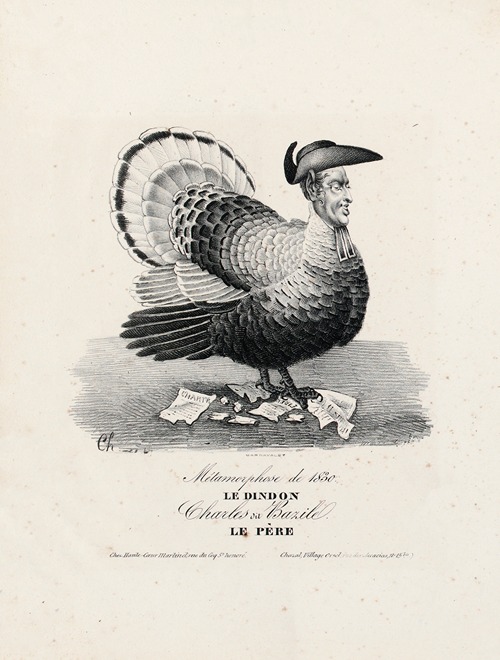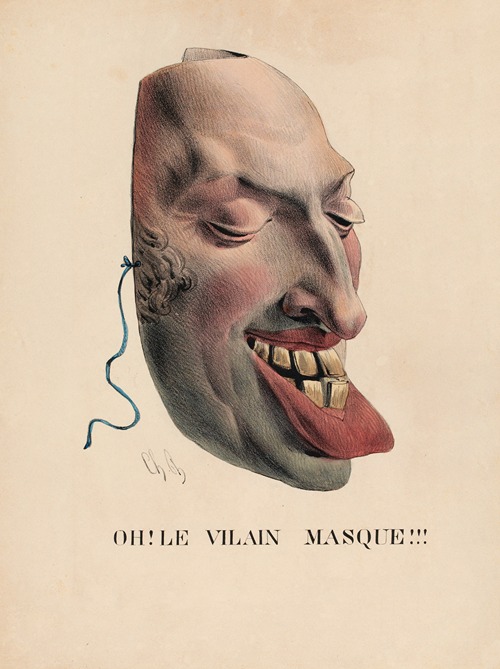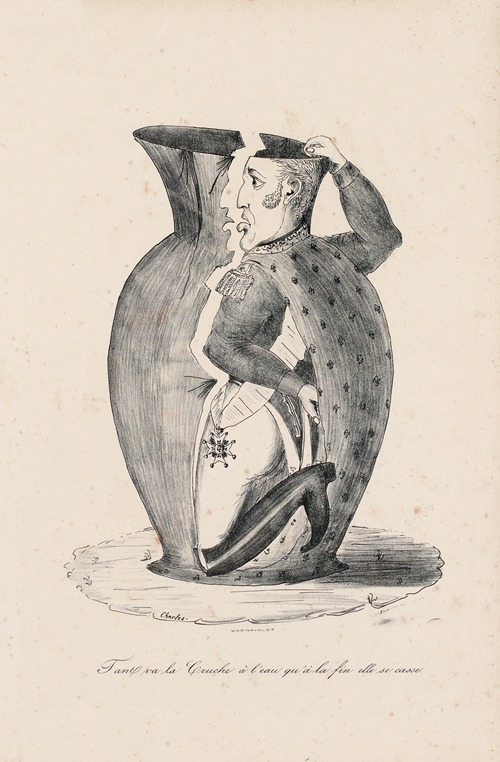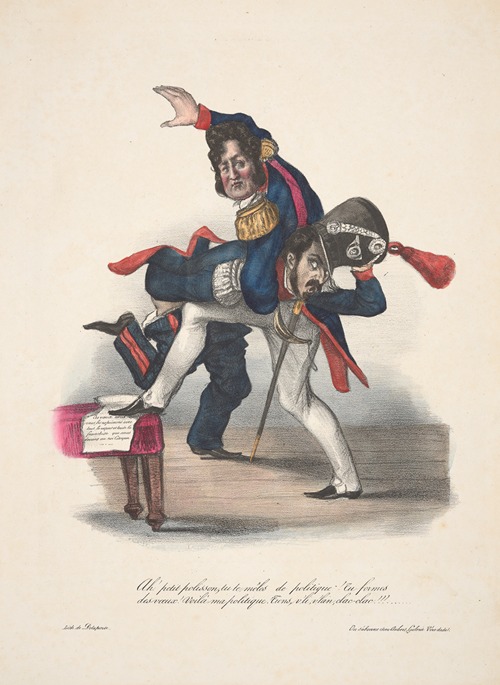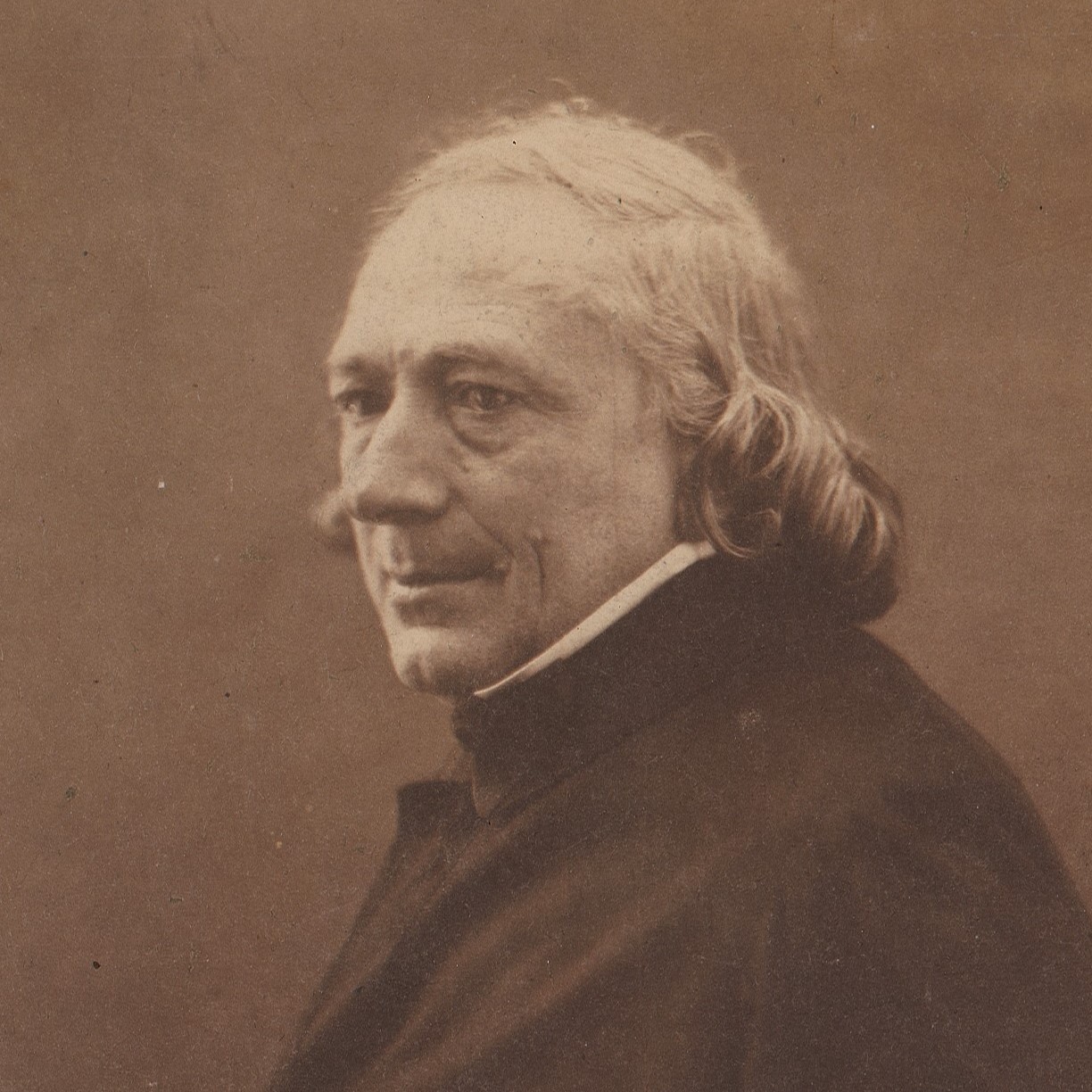

Charles Philipon
Charles Philipon was a French lithographer, caricaturist and journalist. He was the founder and director of the satirical political journals La Caricature and of Le Charivari.
Charles Philipon came from a small, middle-class, Lyons family. His father, Étienne Philipon, was a hatter and wallpaper manufacturer. He enthusiastically welcomed the revolution of 1789. According to Pierre Larousse his ancestors included Manon Roland, Armand Philippon, and Louis Philipon de La Madelaine.
After attending school in Lyons and Villefranche-sur-Saône, Charles Philipon studied drawing at the École nationale supérieure des beaux-arts de Lyon. He left his hometown in 1819 to work under the artist Antoine Gros in Paris but returned at his father's behest in 1821 to join the family business, designing fabric for three years. Though this activity did not suit him, it left its mark on his subsequent work. During hard economic and social times in 1824, he took part in a Lyons carnival parade that was deemed seditious; he was arrested, but ultimately charges were dropped.
Charles Philipon finally left Lyon for Paris where he reunited with old friends from the workshop Gros. One of them, Nicolas Toussaint Charlet, a renowned artist, took him under his wing and introduced him to lithography, a technique spreading in France in the 1820s. Philipon found employment as a lithographer and artist drawing for picture books and fashion magazines. He showed invention by converting a lead chimney to a lithographic machine. He bonded with the liberals and satirists of the day, attended the Grandville workshop (1827), and two years later joined forces with the creators of the newspaper La Silhouette, on which he worked as an editor and designer.
While Philipon's financial contribution to the company was small, his editorial contribution seems to have focused on the organization of the lithographic department, which gave the paper its originality inasmuch as the same importance was given to the illustration as to the text. Whereas La Silhouette previously had no definite political line, by July 1830 it had developed a more aggressive approach. It is in this journal that on April 1, 1830, Philipon published the first political cartoon, " Charles X Jesuit ."
On 15 December 1829 Philipon sent his son and business partner, Gabriel Aubert, to set up the Aubert publishing house Aubert, competing with other printing shops in Paris. The Veronique Dodat pass, where the publishing house could be found, was to become in the following years a "place of breathtaking [commercial] war" (Ch. Lèdre).
After the revolution of July 1830, Philipon published on November 4 of that year an illustrated weekly under the title La Caricature. Sold by subscription only, it had four pages of text and two lithographies in a larger format than that of Silhouette. Associated with the creation of Philipon newspaper, Honoré de Balzac wrote in the prospectus and gave it under various pseudonyms thirty articles until February 1832. The journal was primarily designed as an elegant illustrated magazine, with the drawings printed on vellum paper. The lithographs were printed on separate text and tear sheets. At first, La Caricature adopted a non-political attitude before coming to oppose July Monarchy in the spring of 1832.
On 1 December 1832, while imprisoned, Philipon published Le Charivari, an illustrated daily with four pages in a smaller than Caricature format. More varied and more "popular" than its predecessor, it was not limited to political caricature. Charivari was the only daily caricature journal of nineteenth-century France. According to the prospectus, Charivari was intended as "comprehensive overview of all the constantly recurring events, by pencil and pen, of all the various aspects of this kaleidoscopic world in which we live." The lithographs are of lower quality than in La Caricature, but better integrated into the text. Thereafter, the presentation of Charivari changed significantly.
As the owner of these two newspapers, Philipon retained full control of all aspects of the papers' written and lithographic content.
He chooses his collaborators, dealing with suppliers in the market as well as financial management. In an obituary published in 1862, Nadar the credits of "extraordinary lucidity in business" coupled with "inexhaustible fertility of invention and means". Employer of his artist friends, it defines the objectives with them, suggest topics, coordinating text and lithography. He does not hesitate to ask for changes to avoid censorship. To ensure editorial consistency, writing is reduced to a small team of highly dedicated journalists (in February 1834, they are seven Philipon included).
The testimony of his contemporaries emphasizes Philipon's charisma who inspired writers and caricaturists in his employ. Himself focusing on lithographs, his publishing house had an almost complete monopoly on this type of publication as of 1831, with a third of all lithographs published in Paris coming from him.
He was the director of the satirical political newspapers La Caricature and of Le Charivari, which included lithographs by some of France's leading caricaturists such as JJ Grandville (Jean Ignace Isidore Gérard), Honoré Daumier, Paul Gavarni, Charles-Joseph Traviès, Benjamin Roubaud and others. The artists would often illustrate Philipon's themes to create some of France's earliest political cartoons.
He died in Paris at the age of 61.
